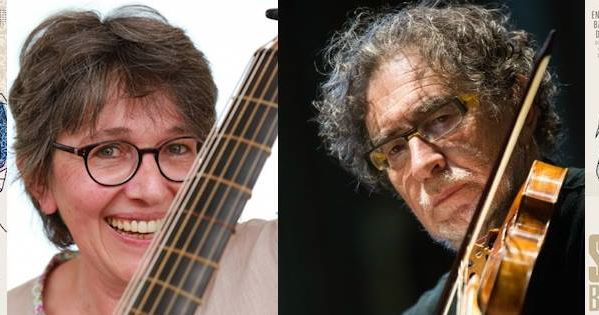“The artist, neither offspring nor first father, can only be innovative within the lineage of an assumed heritage.” Cyril Vettorato, Thinking about the History of Art through the Idea of Lineage
“If what is called in music ‘the Baroque age’ naturally inherited forms from previous periods, it also innovated a lot from these forms and created its own ‘style,’ by developing original structures and a whole language immediately recognizable,” wrote Gilbert Bezzina in the presentation of the Baroque Orchestra of Nice’s season.
He was in his time the most celebrated composer in Germany and a musician with European influence. Dietrich Buxtehude was the prominent figure of instrumental music in Northern Germany for the violin and the viola. He elevated the German trio sonata to high esteem, an instrumental language very contrasting and theatrical.
It is a passionate lover of early music, the soloist SYLVIE MOCQUET, specialist in the viola da gamba, who will be the soloist of this concert. She notably studied with Jordi Savall at the Schola Cantorum of Basel, the reference school for this repertoire.
From “sonare” to “sonata,” there is only one letter, and the sonatas will ring throughout Europe: in Germany, composers refer to their suites or partitas as such.
In Lübeck, Dietrich Buxtehude embraces the form and melds Italian and French influences, in the writing but also by the choice of instruments, the violin and viola da gamba, emblematic of both styles in the 17th century.
From the sonata for solo viola da gamba to trio sonatas for violin, viola da gamba, and continuo, not to forget what made Buxtehude’s reputation, the keyboard music, the soloists of the Ensemble Baroque of Nice will make these free and imaginative pages resonate in the setting of the Holy Shroud Chapel.
The program:
Dietrich Buxtehude (1637?-1707)
Sonata op. I n° 2 in G major BuxWV 253
Lento – Vivace – Adagio – Allegro – Largo – Arioso
Sonata op. I n° 4 in B flat major BuxWV 255
Vivace – Lento – Allegro
Sonata in D major for viola da gamba and harpsichord BuxWV 268
Allegro – Largo – Allegro
Sonata op. I n° 7 in E minor BuxWV 258
Allegro – Largo – Presto – Vivace – Adagio – Poco presto – Lento – Prestissimo
Prelude & fugue in G minor BuxWV 163
Sonata op. II n° 3 in G minor BuxWV 261
Vivace – Lento – Allegro – Andante – Grave – Gigue
Sonata op. II n° 5 in A major BuxWV 263
Allegro – Solo – Concitato – Adagio – Allegro – Poco presto


